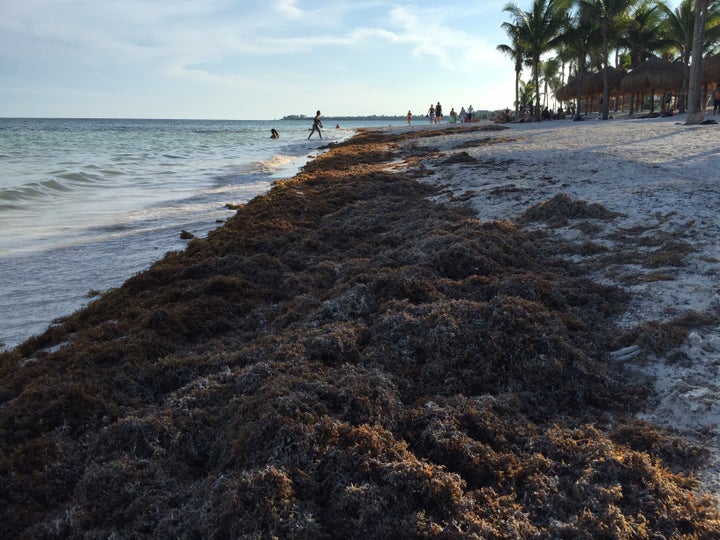
It’s brown, smells like rotten eggs and is a breeding ground for fleas. Welcome to the stinky Caribbean, choked by record amounts of seaweed.
Huge quantities of brown sargassum seaweed are burying the usually pristine beaches and coves of the Caribbean, The Associated Press reports. Tourists have canceled trips, and some lawmakers in Tobago have reportedly called the seaweed a “natural disaster.”
Sargassum grows and floats in an area of the Atlantic called the Sargasso Sea. Sargassum mats are nurseries for sea turtles, and provide habitats for many marine creatures, according to the U.S. National Oceanic and Atmospheric Association.
When the seaweed washes ashore, the little creatures living inside it die, creating a putrid stink. Sand fleas breed in the piles, some of which are up to 10 feet tall.
It’s unclear why there’s so much sargassum this year. Researchers have suggested that rising ocean temperatures and increased fertilizer runoff may be factors.
Removing the malodorous mounds is a challenge. Tractors and heavy machinery can do the job, but they also remove sand from beaches. And then there’s the matter of disposing of the tons of seaweed.
For now, the sargassum is piling ever higher. Check out the pictures below.
